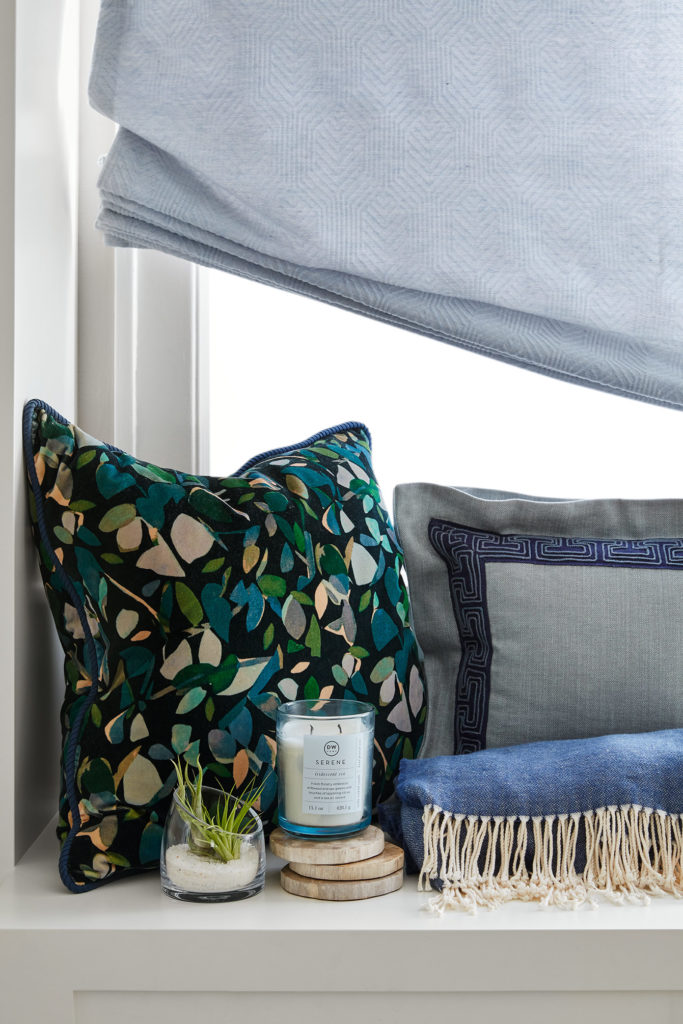What happens when the thought of decluttering drives you crazy? This checklist to declutter your home will guide you through a tidying process that brings peace, not anxiety.
It’s ironic that we’re often overwhelmed by decluttering. Decluttering is about bringing peace and ease into our lives. But I watch the decision overwhelm flood my clients when I mention decluttering: there are too many methods, so many gurus, and they have so much stuff. And more importantly, they have strong feelings about their stuff.
Without a plan to navigate the overwhelm, it’s easy to give up.
It’s my mission as a yoga teacher and an interior designer to reduce the amount of overwhelm in our lives. So if the thought of decluttering drives you crazy, I’m here to help.
I’ve compiled a checklist to declutter your home without driving yourself crazy. This isn’t “5 tips to declutter your home fast.” These are my psychological tips and tricks to create the mental space you need to clear your physical clutter. It’s my list of helpful mindset shifts.
Whether you’re a busy mom with toys all over the house or a minimalist who needs a tidy-up, here’s my checklist to declutter your home and your mind. No overwhelm, I promise.

The Ultimate Checklist to Declutter Your Home (and Your Mind)
1. Focus on the feeling of a tidy home.
We declutter so we can feel better in our space. Whenever you hit a snag, come back to the way you want to feel when you step into your home. I feel peaceful. I feel at ease. I feel in control.
Before you touch your belongings, I want you to imagine the feeling of moving in a space that’s clean and peaceful. Start this practice by thinking of a single room that’s bothering you.
Imagine the room at its best. Everything in the space belongs there. You are grateful for each item. Imagine the feeling in your body when you step into the room. Do you feel peaceful? Are you energized? Do you feel vibrant? Do you feel relaxed? This is your guiding feeling—it’s the reason we’re decluttering.
As you start to declutter, look at each item and ask, “Does it help me feel at peace? Does this help me feel at ease?” If so, keep it. If not, let it go.
2. Release self-judgement.
As an interior designer, I work with hundreds of clients to declutter their space. When I step into your home, I am stepping into your sacred space. I am never there to judge or shame. I am there to notice, to observe, and ultimately to support you as we build a beautiful space together.
Yet even when others don’t judge us, it’s easy to judge ourselves.
Self-judgement doesn’t serve us. It keeps us stuck in feelings of inadequacy and shame — but remember the big picture. Decluttering is about peace and ease. It won’t help if you beat yourself up for your surroundings. So no matter what your home looks like, no matter how messy it seems, let go of any shame.
Where you are now is where you are now. That’s okay.
3. Know that we hold onto clutter for a reason.
When I see my own clutter, I see the opportunity to deepen my self-knowledge. There’s always an underlying emotional reason for clutter.
When we declutter, we give ourselves permission to ask, “Why am I holding onto this?”
Sometimes our things bring back a memory of a loved one. The presence of clutter might be reminiscent of our childhood environment. Other times, stuff is a way to fill a deeper void.
Decluttering can explore our deepest wounds and fears. Be gentle with yourself. Give yourself permission to understand why you’re holding onto your things. Expect challenging feelings, and don’t panic as you face them. We each have our own process of letting go.
4. Ask: “Does it serve me?”
Marie Kondo encourages us to ask, “Does it spark joy?” I prefer to ask, “Does this item serve me?” Things can have practical or emotional uses. Does this item serve your higher self? Do you feel heavy or light when you examine it? Does it help me achieve my goals? Does this item have meaning?
Ultimately, your space as a whole should serve you — practically and emotionally. If it’s not helping you achieve your goals or feel at ease, let it go. If it has meaning, then find a way to honor it in your room.
5. Ask for support.
Is the prospect of decluttering still driving you to distraction? ? Are the feelings a little too intense? It might be time to ask for help. Consider having a friend sit with you while you sort through a stack of old papers. Enlist the help of your partner as you sort through the attic. If you’re tackling a big project, it might be time to hire a professional organizer or interior designer.
Decluttering shouldn’t make you feel awful. At the end of the day, clearing clutter is about making room for peace, ease, and vibrancy. If you’re ready not just to declutter, but to design a home that’s meaningful, reach out to me. I provide in-person and virtual consultations to families across the country.
Through my non-judgmental, person-centered approach, we’ll work through your clutter—then craft a home that speaks to your vision. Book a consultation with me today.

Add a comment
0